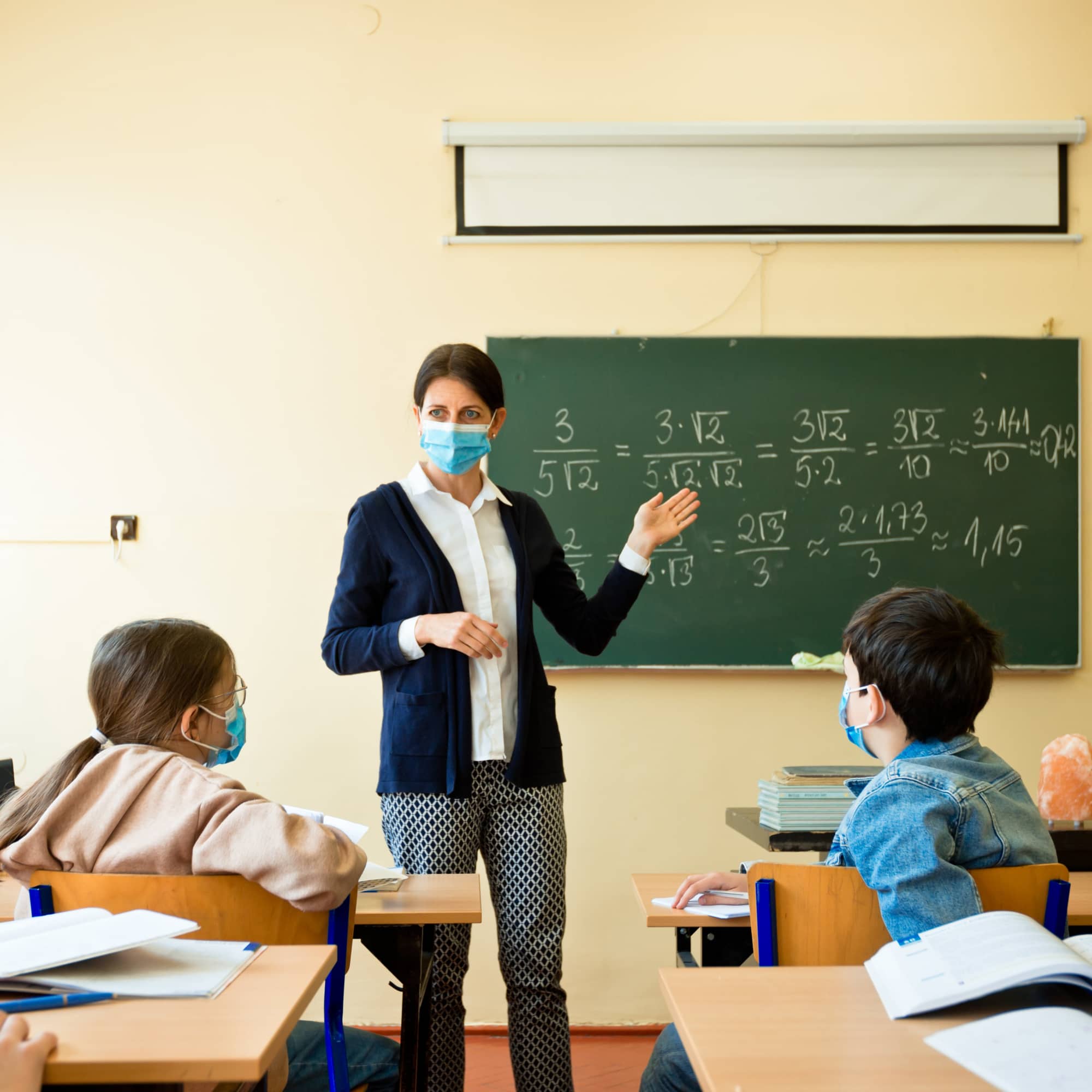
- POPSUGAR Australia
- Living
- US Pediatricians Recommend Kids Return to School This Fall Despite Risks
US Pediatricians Recommend Kids Return to School This Fall Despite Risks

As parents anxiously await news of how school will look this fall amid the coronavirus, one influential group of experts is weighing in with a firm stance in support of a return to normalcy.
The American Academy of Pediatrics (AAP) issued a report that recommended students physically attend in-person school vs. continuing remote learning alternatives. Among the extensive guidelines, one line was set apart in bold-face type: “The AAP strongly advocates that all policy considerations for the coming school year should start with a goal of having students physically present in school.”
Related: How and When Will Schools Reopen? Experts Outline the Possible Scenarios
The group’s memo was released last week in order to support public health and education leaders as they create policies for school reentry.
“The AAP strongly advocates that all policy considerations for the coming school year should start with a goal of having students physically present in school.”
“Schools are fundamental to child and adolescent development and well-being and provide our children and adolescents with academic instruction, social and emotional skills, safety, reliable nutrition, physical/speech and mental health therapy, and opportunities for physical activity, among other benefits,” the AAP said. It also added that the role of schools goes far beyond education – they play a “critical role in addressing racial and social inequity,” and the past several months of school closures have had a much greater devastating impact on children of color as well as those students in low-income families or those with learning disabilities.
“Lengthy time away from school and associated interruption of supportive services often results in social isolation, making it difficult for schools to identify and address important learning deficits as well as child and adolescent physical or sexual abuse, substance use, depression, and suicidal ideation,” the statement read. “This, in turn, places children and adolescents at considerable risk of morbidity and, in some cases, mortality.”
One of the common concerns about a return to in-person education before the availability of a vaccine is the public health risk associated with gathering children indoors during a global pandemic. However, the AAP cited “mounting evidence” that COVID-19 “appears to behave differently in children and adolescents than other common respiratory viruses, such as influenza,” on which much of the current guidance surrounding school closures is based.
Related: This Flow Chart Outlines What Schools, Day Cares, and Summer Camps Must Do Before They Can Reopen
The group of US pediatricians believes children “may be less likely to become infected and to spread infection” and that “policies to mitigate the spread of COVID-19 within schools must be balanced with the known harms to children, adolescents, families, and the community by keeping children at home.”
Those policies, the AAP stated, should include the standard protocol of handwashing, disinfecting, the use of outdoor space when possible, and the formation of small student groups, also known as “cohorting.” But, it affirmed, it should not go so far as to limit student attendance due to physical-distancing constraints: “Schools should weigh the benefits of strict adherence to a 6-feet spacing rule between students with the potential downside if remote learning is the only alternative.”
“Schools play a critical role in addressing racial and social inequity.”
The guidelines do not offer as many recommendations for teacher safety – a major roadblock to reentry, considering a third of teachers are more than 50 years old and thus in a higher-risk category. So, whereas the AAP maintains that masks are not practical for elementary-school-age children, it advises conducting faculty and parent-teacher conferences virtually to increase adult-to-adult physical distance.
The bottom line, according to the AAP, is that policymakers should recognize that “no single action or set of actions will completely eliminate the risk of transmission.” There is no way to make schools 100 percent safe, and these pediatricians believe the alternative – another series of months without a physical classroom for children to attend – is a far greater risk to student health than the coronavirus itself.

